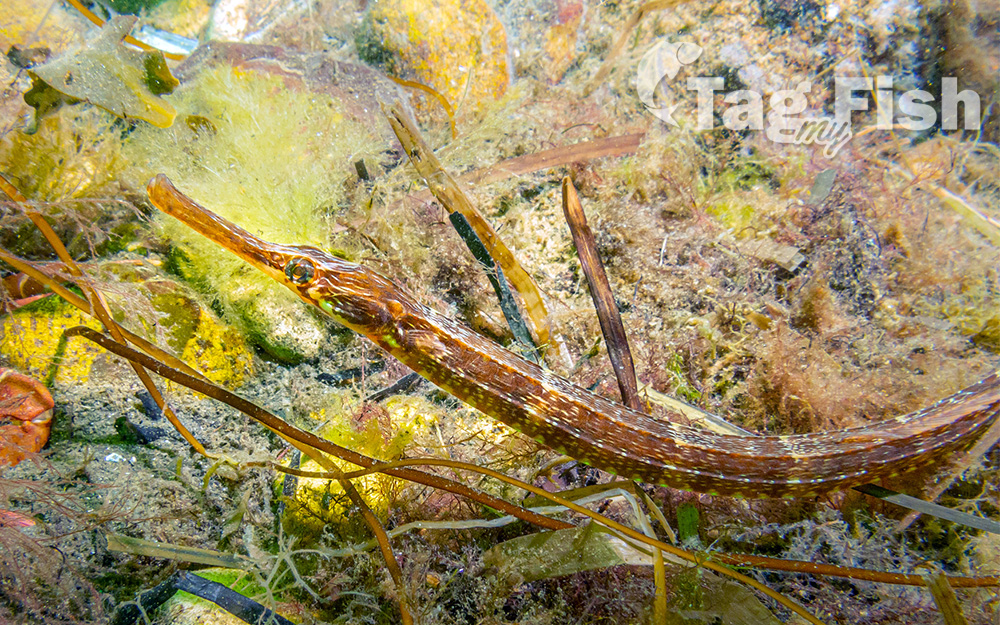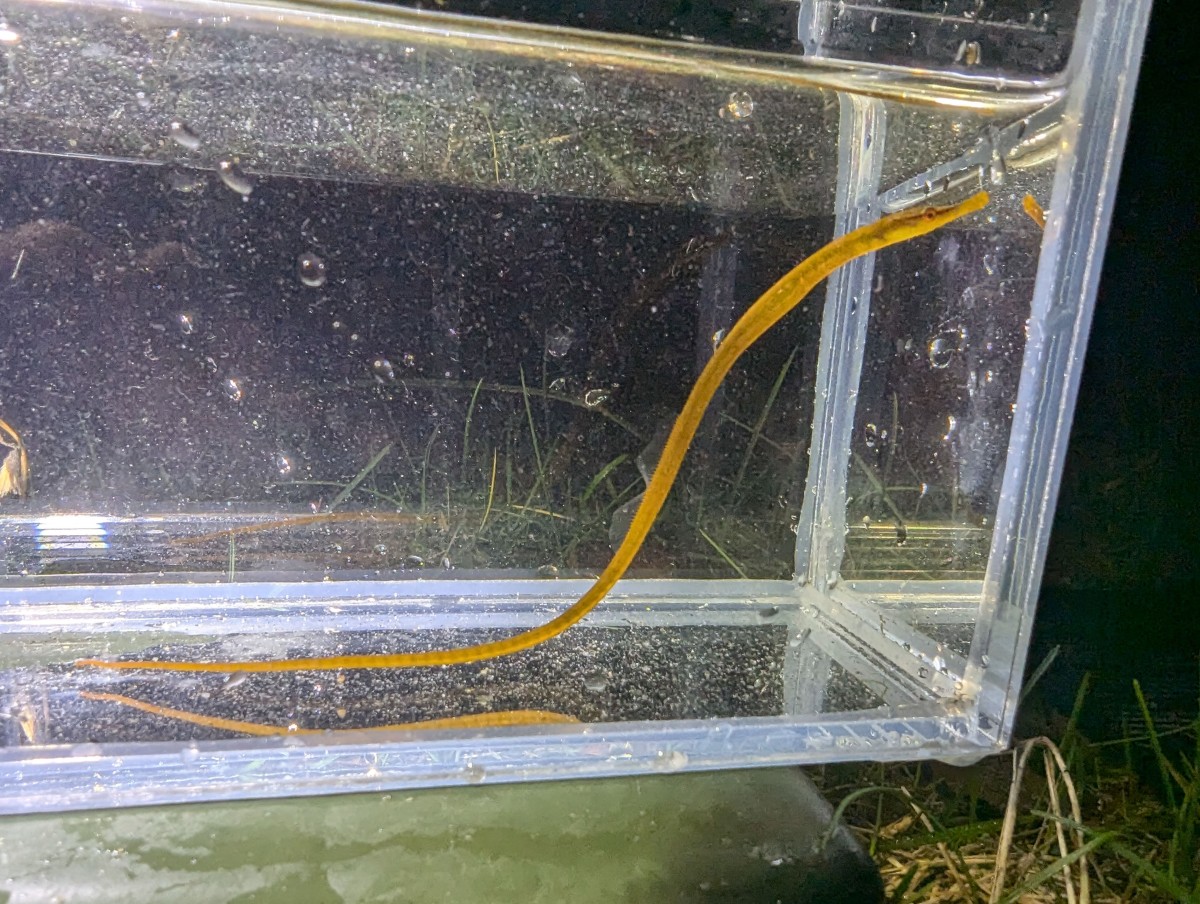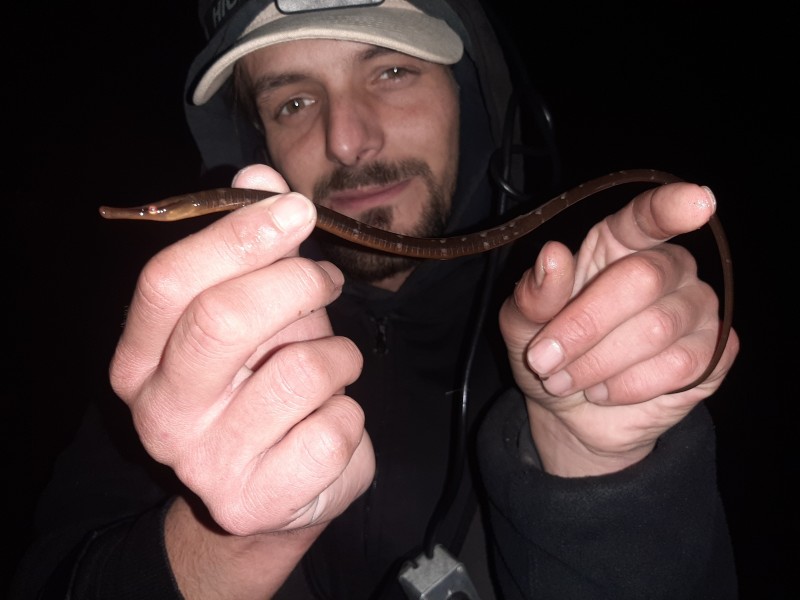Snake pipefish
(Entelurus aequoreus)

General data
The snake pipefish (Entelurus aequoreus) is a species of pipefish, from the family Syngnathidae, native to the northeastern Atlantic Ocean where they are generally found amongst algae close in to shore. It is the largest species of pipefish recorded in European waters and has spread into arctic waters in the early 2000s.
The snake pipefish has a very long, elongated and slender body which has a smooth skin and rounded cross-section and which is distinguished from other sympatric pipefishes by the near lack of bony rings. It has a long head, with a thin dark stripe in its sides, with a long, concave snout and a very small, protractile mouth.
The long based dorsal fin has 37-47 short rays while the caudal fin is minute and there are no pectoral fins or anal fins. They are pale brown or yellowish-green in colour with each of the 28-31 rings on the body marked out by pale blue rings with dark margins. The opening to the gills has been reduced to a pore in the membrane above the opercle and the gill membranes are fused to the body and the isthmus.
They can grow to total lengths of 40 centimetres (16 in) in males and 60 centimetres (24 in) in females, although they are more commonly around 32 centimetres (13 in) and 45 centimetres (18 in) respectively.
The juveniles of less than 70 mm in length have membranous pectoral fins which disappear as they mature.
The snake pipefish occurs in the north eastern Atlantic from Iceland and Norway to the Azores, into the Baltic Sea. In the early 2000s it expanded its range northwards as far as Svalbard and the Barents Sea. It is not found in the Mediterranean Sea.












